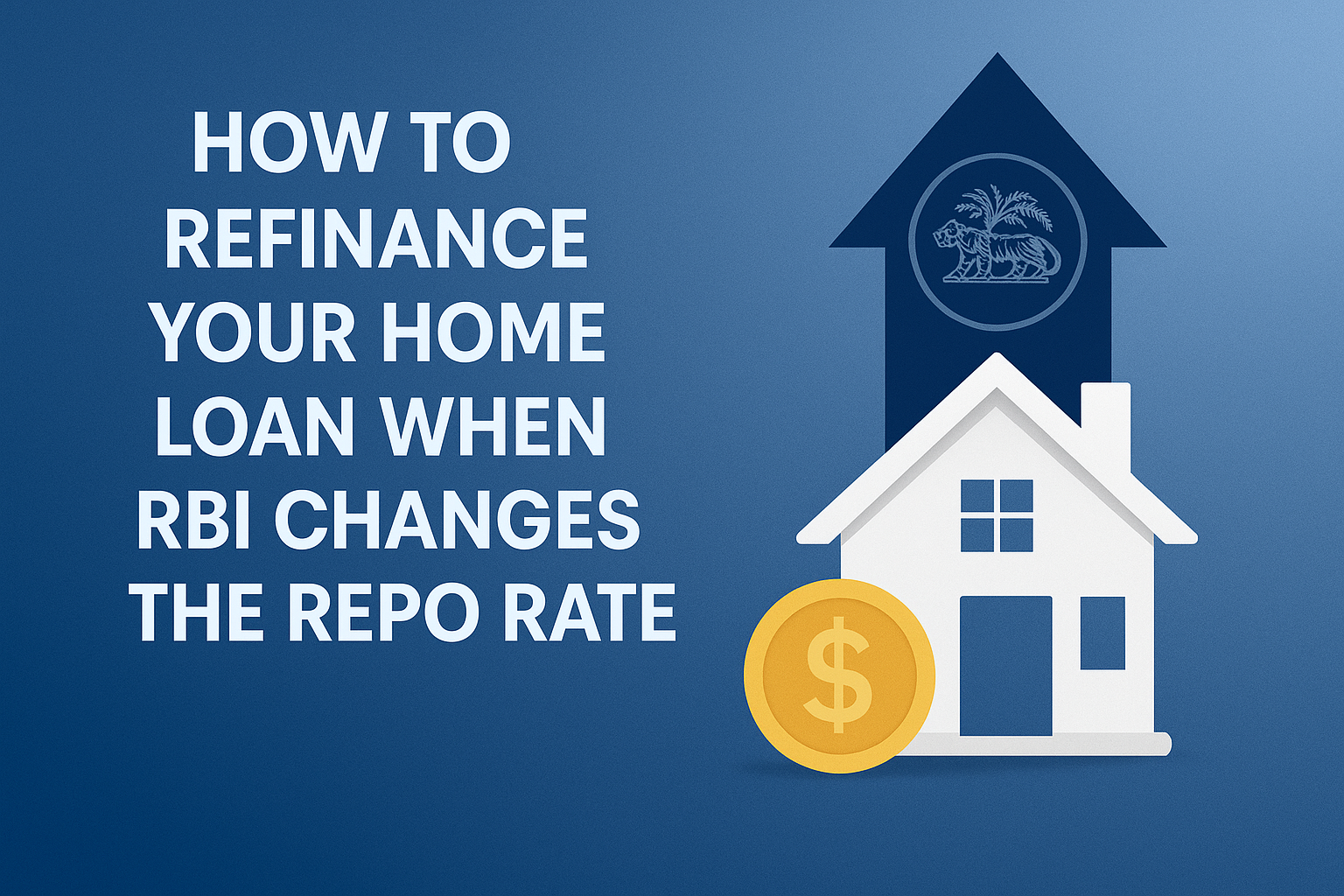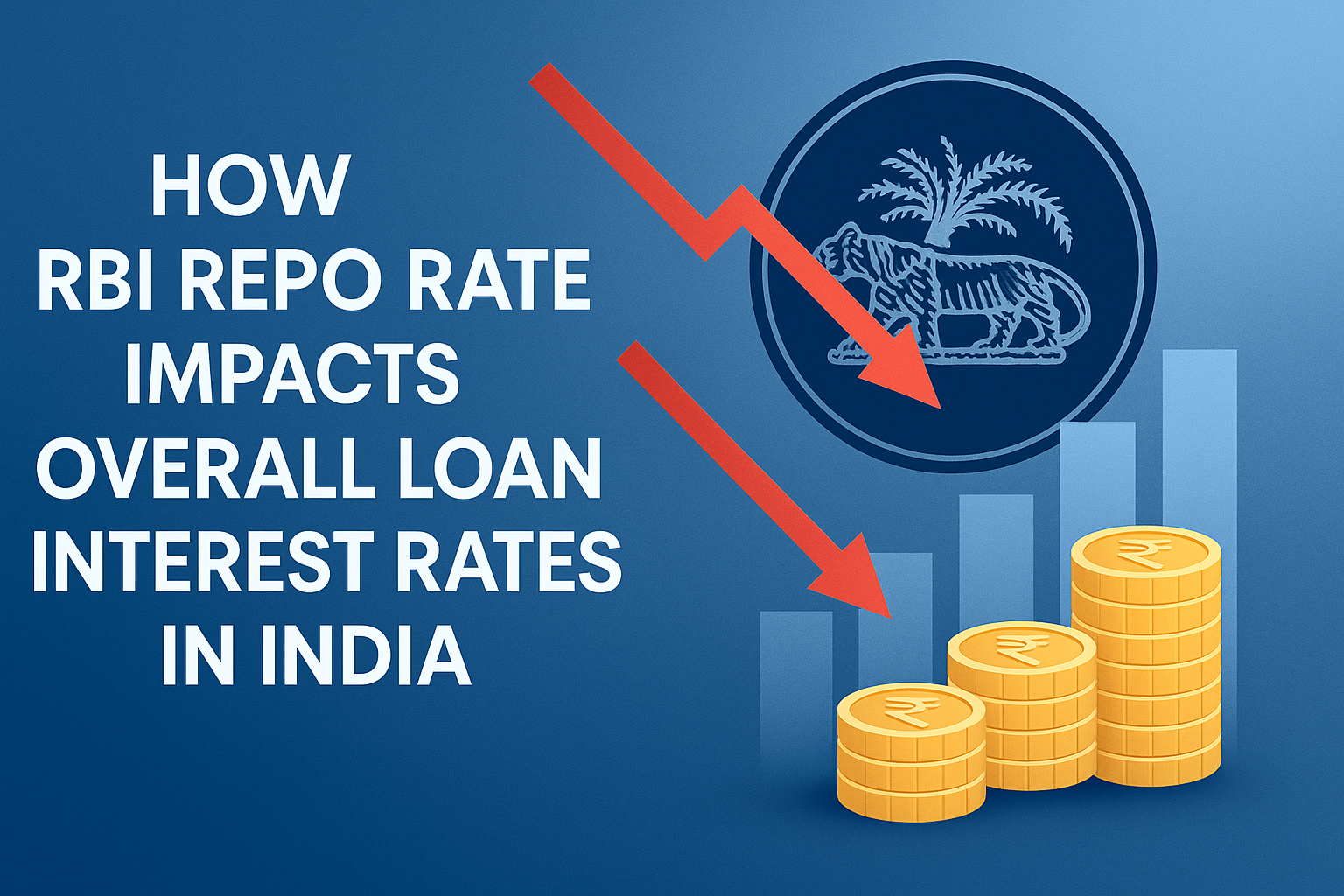How to Refinance Your Home Loan When RBI Changes the Repo Rate

The Reserve Bank of India (RBI) plays a crucial role in shaping the cost of borrowing through periodic adjustments of the repo rate. For home loan borrowers, even a minor change in the repo rate can have a significant impact on monthly EMIs. As interest rates fluctuate, many homeowners consider refinancing or home loan balance transfer as a smart way to reduce interest costs. In this article, we’ll explore how refinancing works when the repo rate changes, and how you can use tools like an EMI calculator to make an informed decision.
How RBI Repo Rate Impacts Your Home Loan
The repo rate is the interest rate at which RBI lends money to commercial banks. When RBI reduces the repo rate:
- Banks lower their lending rates.
- Home loan interest rates may drop, especially for floating-rate borrowers.
- New borrowers enjoy cheaper loans, while existing borrowers may see reduced EMIs if their loan is linked to external benchmark rates.
- On the flip side, when the repo rate increases:
- Lending becomes costlier.
- Banks may raise home loan rates, leading to higher EMIs.
- If you find your current lender isn’t offering competitive rates after a repo rate change, home loan refinancing becomes a viable option.
What is Home Loan Refinancing?
Refinancing or home loan balance transfer involves shifting your outstanding home loan from your existing lender to a new lender offering lower interest rates or better terms.
- Benefits of refinancing include:
- Lower interest rate.
- Reduced EMI amount.
- Potential savings on total interest paid over the loan tenure.
- Flexible repayment terms.
When Should You Consider Refinancing After Repo Rate Changes?
✔ When the repo rate has fallen significantly and your lender hasn't passed on the full benefit.
✔ When you are still in the early stages of your loan tenure (first 5–10 years).
✔ When a new lender offers a considerably lower rate (usually a minimum 0.5% lower is ideal).
✔ When your current loan is on a higher fixed rate and the market offers better floating rates linked to the external benchmark.
How to Refinance Your Home Loan
1️⃣ Evaluate Current vs New Interest Rates
Start by comparing your existing home loan interest rate with the current market rates offered by other lenders. Check if they’ve reduced rates after the latest RBI repo rate change.
2️⃣ Use an EMI Calculator
An EMI calculator is your best tool for quick comparisons.
Enter your outstanding loan amount, remaining tenure, and the new lower interest rate.
The calculator instantly shows your potential EMI savings.
Compare your current EMI with the calculated EMI to estimate monthly and total savings.
👉 Example:
If your current EMI is ₹40,000 and refinancing can reduce it to ₹36,000, you save ₹4,000 every month — adding up to significant savings over the years.
3️⃣ Calculate the Total Cost of Refinancing
While lower EMIs are attractive, don’t ignore the cost of refinancing:
Processing fees.
Legal and valuation charges.
Documentation charges.
Foreclosure fees (if applicable).
Calculate whether the total savings exceed these costs. Most online home loan refinance calculators include these fields for accurate assessment.
4️⃣ Apply for Loan Transfer
Once you’re confident that refinancing is beneficial:
Submit your refinance application to the new lender.
Complete KYC and submit required documents.
The new lender will pay off your old lender, and you’ll start repaying EMIs at the new rate.
5️⃣ Keep Your CIBIL Score in Check
Lenders will check your credit score before approving the refinance request. Maintain a healthy CIBIL score (typically 750+) to secure better terms.
Advantages of Refinancing After Repo Rate Drop
- Immediate EMI reduction.
- Long-term savings on total interest.
- Better loan terms (like flexible tenure or top-up loan options).
- Option to shift from fixed to floating rate loans linked directly to the repo rate.
Caution: Refinancing May Not Always Be Ideal
In certain scenarios, refinancing may not make sense:
- If you’re in the final stages of repayment.
- If the rate difference is negligible.
- If refinancing costs outweigh potential savings.
- If you have a poor credit profile.
Use online EMI calculators to do the math and avoid refinancing mistakes.
Conclusion
RBI repo rate changes offer an excellent opportunity for home loan borrowers to reassess their loan terms. By proactively monitoring market trends and using tools like EMI calculators, you can make informed refinancing decisions that optimize your financial health. Always evaluate both the short-term and long-term implications of refinancing to ensure it aligns with your financial goals.
Remember, even a 0.5% reduction in your home loan interest rate can save you lakhs of rupees over the tenure. Use the power of refinancing wisely to take full advantage of favorable RBI policy changes.
Note: IndiBlogHub features both user-submitted and editorial content. We do not verify third-party contributions. Read our Disclaimer and Privacy Policyfor details.







